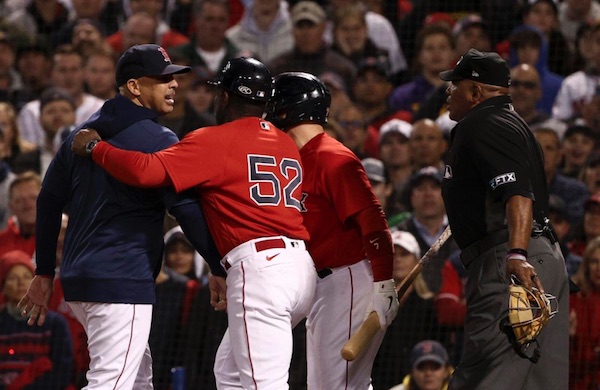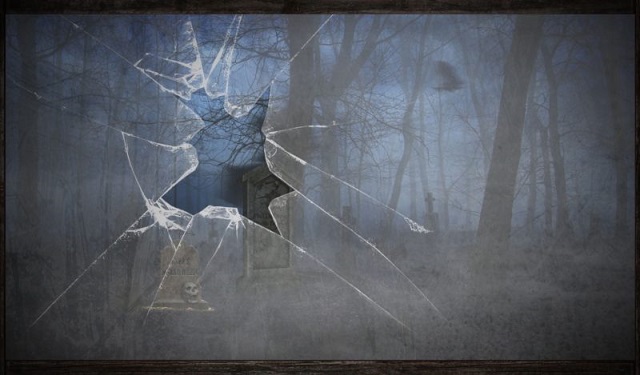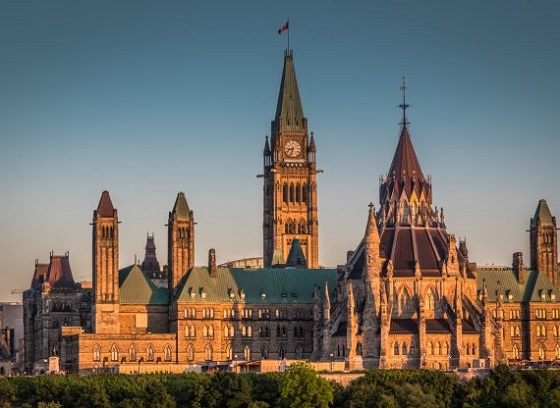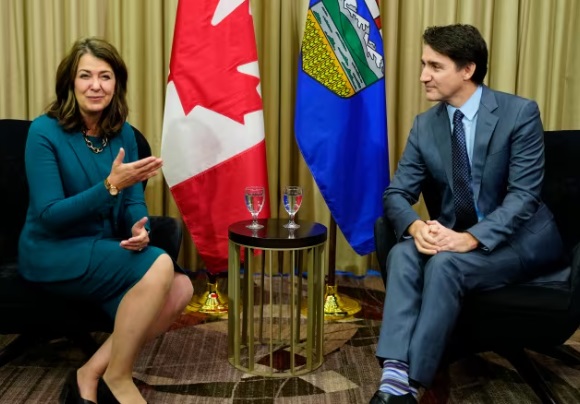Bruce Dowbiggin
Punch Out: Time To Go Virtual On Balls And Strikes

Former MLB catcher Gregg Zaun was a young player working behind the plate in a 1980s game umpired by the gruff Ken Kaiser (who moonlighted as a wrestler for a time). Zaun was trying to help his pitcher on the Baltimore Orioles by framing pitchers that Kaiser might like.
On a call that Zaun and his pitcher both wanted called a strike— but the veteran ump Kaiser called a ball— the budding catcher, without turning around, inquired, “Where was that pitch, Mr. Kaiser?”
Kaiser replied, “Son, I just call ‘em. I don’t describe ‘em.”

There is power in sports. And then there is umpire power. As we have seen in the 2021 postseason, the ability of a single umpire behind home to shape an outcome is tremendous. That authority comes from the century before hi-tech allowed TV broadcasters to show a virtual strike zone on screen.
If the ump called it a strike, it was a strike. Despite volcanic eruptions from mangers liker Earl Weaver and generations of players blowing off steam there was no recourse. Eventually players were forced to put their bat on their shoulder and walk back to the dugout. Or to the clubhouse, if their tantrum got them tossed from the game.
Rarely was an umpire publicly fired. Unless it was Dave Pallone who was apparently canned for being gay and upsetting Pete Rose in the days when Rose was an MLB big shot. Certainly none of them were held to any standard in terms of fitness.
Now, however, the fan can see the virtual strike zone. And can see that an umpire like Laz Diaz, who was behind home plate for the Astros 9-2 win over the Red Sox in Game 4 of the ALCS, needs to be cashiered. This allows reporter/ author Jeff Passan to tweet:
@jeffpassan Home-plate umpire Laz Diaz has missed 21 ball-strike calls tonight, according to @ESPNStatsInfo. That is the most of any umpire this postseason. The green dot in the upper RH corner is the Eovaldi curveball that would’ve ended top of the ninth with the score 2-2.

The game was no exception for Diaz. As our friends at @umpscorecards show that Diaz missed almost ten percent of his ball/strike calls on average during the season (91.9%). One game he called only 87.6 percent of calls correctly.
Which is not to single out Diaz. For instance, Angel Hernandez missed 356 of the 4833 pitches he called this season for 92.6% accuracy. Brian O’Nora (91.8% accuracy), Jerry Meals (93%), Rob Drake (92.1%), CB Buckner (92.7%) Doug Eddings (92.6%), Larry Vanover (92.5%), Ron Kulpa (91.8%) and the legend Joe West (92.2%) are among the many who leave something to be desired. (We highly recommend following this detailed site if you are a fan or a bettor.)
While the average ball/ strike accuracy in the wider echelon of umpires hovers in the 92-95 percent range, even the best umpires have single games where their accuracy is in the mid-to-high 80s. Were those games that decided playoff spots? Division titles? Pitchers/ batters getting bonuses? Why did MLB not enforce a higher standard?
Look, 92-95 percent for the human eye in a stressful situation where 50,000 people are screaming at you is an impressive stat. And the umpiring today is scrutinized heavily by MLB for patterns that might produce betting scandals. There’s no doubt that the ball/ strike calling is vastly improved from Kaiser’s day when there were “pitchers’ umps” and “hitters umps”.
(Aside: On a Blue Jays TV broadcast this season former MLB catcher Buck Martinez and sidekick Pat Tabler, a former outfielder, seemed to pine for the days when umps’ expanded strike zones encouraged players to “get the bat swinging” and reduced hitters working counts.)
But the virtual stroke zone shows MLB can have 100 percent accuracy to a defined strike zone. Not to put @umpscorecards out of work, but with a virtual strike zone MLB has the power to remove doubt about the strike zone, end arguments and conspiracies about certain umps and make the games move faster.
One only need look at the Hawkeye system at work now in tennis for calling lines. The days of John McEnroe or Jimmy Connors going ballistic over a line call have magically ended as the computer unequivocally demonstrates that a ball is in or out. The sideshow of rage has now become a shrug of the shoulders as the affected player moves on to the next point, angry at themselves, not the chair umpire or line official.

There are other pluses. Frankly who is also not happy to forgo the site of middle-aged tennis officials at Wimbledon or Roland Garros stuffed into tight pants and clingy blouses like sausage rolls, looming over the court like people waiting for the kettle to boil. Other than an ad for Weight Watchers it’s a sight we can consign to the past.
So why doesn’t MLB use the tech they’ve got? Some suggest they’re leery of upsetting the influential umpires union who guard their privilege zealously, even in the face of some completely useless colleagues. Other still hold with the dinosaurs who say the virtual strike zone is inaccurate or can move unexpectedly.
This just in: Even if the virtual strike zone is off an inch or two it’s the same standard for both pitchers and all hitters. There’s also no need to put people out of work. The home-plate ump can still make calls on foul tips, swinging strikes, plays at the plate and the running of the game. Enough already.
While MLB is at it, use the Hawkeye system for foul lines, foul poles and outfield fences, too. The technology is there. Forget the 19th century nostalgia.
Addendum: The Atlanta Braves toppling of the mighty Dodgers is genuine MLB karma for Atlanta. You may remember that commissioner Rob Manfred acquiesced to the Woke mob this summer when Georgia instituted stricter laws for voter authenticity that require photo ID. In a panic to seem progressive he took the All Star Game away from Atlanta and awarded it to Denver.
Mostly is it was another Hate Trump ploy to curry favour with the Media Party that broadcasts his games. Now Atlanta gets the World Series. Hope they remind the precious people everyday what those bastards did to them and rub it in mercilessly. Hope Manfred gets asked for his ID everywhere he goes. Other than that, we’re fine with it.
Bruce Dowbiggin @dowbboy is the editor of Not The Public Broadcaster (http://www.notthepublicbroadcaster.com). The best-selling author of Cap In Hand is also a regular contributor to Sirius XM Canada Talks Ch. 167. A two-time winner of the Gemini Award as Canada’s top television sports broadcaster, his new book with his son Evan is called InExact Science: The Six Most Compelling Draft Years In NHL History is now available on http://brucedowbigginbooks.ca/book-personalaccount.aspx
Bruce Dowbiggin
Coyotes Ugly: The Sad Obsession Of Gary Bettman

It came to this. Playing in the 6,000 seat Mullet Arena on the campus of Arizona State. Owned by a luckless guy who eschewed the public spotlight. Out of the playoffs, their bags packed for who knows where, the Arizona (née Phoenix) Coyotes gave an appreciative wave to the tiny crowd gathered to say Thanks For The Memories.
With that they were history. Although NHL commissioner-for-life Gary Bettman has promised the last in a set of hapless owners that he can revive the franchise for a cool billion should he build the rink that no one was willing to build for the Yotes the past 20 years.
The Arizona Republic said good riddance. “Metro Phoenix lost the Coyotes because we are an oversaturated professional and college sports market with an endless supply of sunshine and recreational choices. Arizona may have dodged a slapshot:
We have the NFL Cardinals, the MLB Diamondbacks, the NBA Suns, MLB spring training, the WM Phoenix Open, the Phoenix Rising, the WNBA Mercury, the Indoor Football League Rattlers and the Arizona State Sun Devils. There hasn’t been a household name on the Coyotes since Shane Doan, and half of Phoenix probably doesn’t know who he was”.
Likely they’ll be a financial success in Salt Lake City where there’s a viable owner, lots of money and a will to make it work. They’ll need a will because— stop me if you’ve heard this before about the Coyotes— the rink they’ll play in this fall has only 12,500 unobstructed views for hockey.
Watching this farce we recalled getting a call from Blackberry co-founder Jim Balsillie in 2008, shortly after our book Money Players was a finalist for the Canadian Business Book of The Year. We’d written a fair bit about the Coyotes in our work and someone had told Balsillie we might be the ones to talk to about a plan he was concocting to buy the bankrupt Coyotes and eventually move them to Hamilton.

Balsillie was salty over the way he’d been used as a stalking horse in the financial troubles of the Pittsburgh Penguins in 1990s. Flush with money from the huge success of RIM, Balsillie offered to buy the Pens, with an eye to moving them to southern Ontario if Pittsburgh didn’t help build a new arena for the team.
In time, Balsillie saw that Bettman was only trying to protect the investment Mario Lemieux and others had in the Pens. Balsillie was the black hat who eventually spooked Pittsburgh into giving the current owners what they wanted. At the end of the day, Mario got his money and Balsillie was given a “thanks for trying”: parting gift of nebulous promises.
Still smarting, Balsille vowed not to be used again. in his desire to bring the NHL to southern Ontario. So when the Coyotes owner Jerry Moyes threw the keys to the team on Bettman’s desk, he saw an opening in the bankruptcy that followed. Seeing Bettman as the impediment, Balsillie decided to buy the team out of bankruptcy, a process the NHL could not legally prevent.
What Balsillie wanted to know was “What then? How would Bettman fight back?” We told him that no one flouts Bettman’s authority within the NHL. (All the current owners since 1993 have come aboard on his watch.) And that he’d have to get the Board of Governors to approve his purchase. Odds: Nil.
That’s what happened. Rather than admit that the Valley of the Sun was poisoned for hockey, Bettman found another series of undercapitalized marks to front the franchise while the league quietly propped up the operation. No longer was the Coyotes’ failure about the fans of Arizona. It was about Gary Bettman’s pride.

Protestors stand outside a press conference in Tempe featuring Arizona Coyotes executives discussing propositions related to a new arena and entertainment district. (Photo by Brooklyn Hall/ Cronkite News)
Where he had meekly let Atlanta move to Winnipeg he fought like hell to save Arizona. And his power. (His obstinacy on U.S. network TV is another story.)
Fast forward to last week and the abject failure of that process. The Arizona Republic naively fawned on Bettman for his many attempts to save the team. In fact, they were just attempts to buttress his grip on the league. While the Coyotes may have been a mess, Bettman has succeeded in preserving the investments of most of the business people who bought his NHL business prospectus.
Sometimes it meant riding into Calgary to chastise the locals for their parsimony in not giving the Flames a new rink. Ditto for Edmonton. Ditto for Winnipeg and other cities. Other times it was to shore up weak partners to protect the equity of other prosperous cities. Sometimes it was to tell Quebec City, “Not gonna’ happen.”
For his loyalty to the owners and through some luck— Gretzky to the Kings— Bettman has made the NHL work in places no one might’ve imagined. Nashville. Raleigh. Tampa. Las Vegas. Dallas. Not at the level of the NFL, NBA or MLB, but at a comfortable equity-affirming status. Nothing happens without his say-so in the NHL. Or without him getting credit. Secondary NHL execs who wanted credit for their innovations were quietly punted.
When Houston finally gets a franchise from Gary they’ll part with $1.5 billion for the honour. While the commissioner has played down new franchises and expanded playoffs, you can bet your last dollar that he’s told owners they’re in line for more expansion cash— cash they don’t have to split with players in collective bargaining.
One more certainty. As long as Bettman rules the NHL you won’t see an NHL team back in Arizona.
Bruce Dowbiggin @dowbboy is the editor of Not The Public Broadcaster A two-time winner of the Gemini Award as Canada’s top television sports broadcaster, he’s a regular contributor to Sirius XM Canada Talks Ch. 167. Inexact Science: The Six Most Compelling Draft Years In NHL History, his new book with his son Evan, was voted the seventh-best professional hockey book of all time by bookauthority.org . His 2004 book Money Players was voted sixth best on the same list, and is available via brucedowbigginbooks.ca.
Bruce Dowbiggin
Why Are Canadian Mayors So Far Left And Out Of Touch?

‘The City of Edmonton pays for a 22-person climate team but doesn’t know who on that team is responsible for what, or what that team has accomplished. Meanwhile, Council takes a pay raise and bumps our property taxes by 8.6%” @michaelistuart
We just returned from a long trip to discover that the City of Calgary wants to potentially re-zone our neighbourhood. Bridle Estates is a collection of 175 bungalow villas for people aged 55-plus. While some people still work most of the inhabitants are retirees. The city’s earnest idea is to create low-cost housing for the tens of thousands arriving here in the city from away.
You can see why a city hall obsessed with white privilege wants to democratize our neck of the south-west corner of the city. Enforced justice has a great tradition. 1970s American cities decided that bussing was the antidote to segregation. After a SCOTUS decision allowing the practice in 1971 (back when liberals owned the court) progressives pushed through an aggressive plan to bus kids from the inner city to the leafy suburbs. And vice versa.
It worked like a charm. For conservatives, that is. It radicalized a generation of voters who soon installed Ronald Reagan as president, and empty buses went back to the depot. The Democrats went from the party of the people to the party people in Hollywood. With time dulling memories, contemporary Woke folk are reviving the integration dream. This time the mostly white suburbs will bear the brunt of the government’s immigration fixation (400K-plus in the third quarter).

There are meetings planned where citizens will be able to address their elected officials— no doubt in a respectful voice. But anyone who’s dealt with Climate Crisis Barbie— Mayor Jyoti Gondek— has much optimism. This is a mayor who exploited a three-way split in centre-right voting here to declare a Climate Emergency on her first day in office.
Then she rolled out hate-speech laws to protect her from being razzed in public. For this and other fabulist blunders— her messing with the new arena project drove a worse deal and a two-year delay in a home for the Calgary Flames— she faced a recall project (which failed to collect over 400K voters’ signatures).
With a housing bubble expanding everyday, Her Tone Deafness has decided that owning a home is so passé. ”We are starting to see a segment of the population reject this idea of owning a home and they are moving towards rental, because it gives them more freedom.” She added that people have become “much more liberated around what housing looks like and what the tenure of housing looks like.”
As the Calgary’s schmozzles and Edmonton’s dabble in climate extravagance illustrate the municipal level of government in Canada is a few lobsters shy of a clambake. Across the country major cities are in the hands of radical NDP soldiers or virtue warriors who would rather have symbols than sewers to talk about.
In Toronto, Jack Layton’s widow Olivia Chow is leveraging her 37 percent mandate to make Toronto a kinder, Wok-er city. In Vancouver and Victoria, B.C., the open-air drug agendas of new mayors and city councils have sent capital fleeing elsewhere. Despite crime and construction chaos, Montreal mayor Valerie Plante won a second term, by emphasizing her gender.

In times when the coffers were full, this ESG theatre might have been a simple inconvenience. But since the federal and provincial governments began shoving responsibilities and costs downward to municipalities there is no wiggle room for grandstanding politicians at the city level. Or for hapless amateurs.
With the public incensed over residential property tax increases on one side and the blandishments of aggressive developers on the other, competent governance has never been more needed in the urban areas. While feds can (and have) printed money to escape their headaches and the provinces can offload costs onto the cities, the municipalities have no room for risk.
The time bomb in this equation is the debt load that the three levels can sustain. After this week’s budget, federal spending is up $238B, or 80 percent since 2015. Coming off this free-spending budget the feds have pushed the federal debt to more than $1.2 trillion this year (in 2015, the debt was $616 billion.) None of the provinces has shown any appetite for the 1990s-style cuts to reduce their indebtedness. Leaving cities to crank the property-tax handle again.
So far, Canada’s cities have been able to use friendly municipal bonds to ease their fiscal problems. But if the Canadian economy continues its tepid performance with no reduction in debt, financial experts tell us that there could be a flight from Canadian municipal bonds— with a consequent spike in interest rates elsewhere.
The backlash on free-spending governments will be severe— and restricted municipalities will be hardest hit. None of this is resonating with Canadians still flush with cash from Covid. The stock markets are still buoyant and those living in cashbox houses are counting their dividends. Willful denial is the Trudeau legacy.

Which is why so many Canadian were shocked last week when American AntiTrump media star Bill Maher did an intervention on Canadian conceits. Using the True North as his warning to America, Maher ripped apart the gauzy leftist dream of Canada as the perfect society, the Sweden north of Estevan. By the time he was done, the single-payer myth was bleeding on the ground.
Maher knows that the bill is coming due for free-spending Canada and its climate charlatans. (The IMF is already warning of a global crisis over debt loads.) The question is: will Canadians come to the same conclusion before it’s too late to save the cities?
Bruce Dowbiggin @dowbboy is the editor of Not The Public Broadcaster A two-time winner of the Gemini Award as Canada’s top television sports broadcaster, he’s a regular contributor to Sirius XM Canada Talks Ch. 167. His new book Deal With It: The Trades That Stunned The NHL And Changed hockey is now available on Amazon. Inexact Science: The Six Most Compelling Draft Years In NHL History, his previous book with his son Evan, was voted the seventh-best professional hockey book of all time by bookauthority.org . His 2004 book Money Players was voted sixth best on the same list, and is available via brucedowbigginbooks.ca.
-

 COVID-192 days ago
COVID-192 days agoJapanese study finds ‘significant increases’ in cancer deaths after third mRNA COVID doses
-

 Brownstone Institute2 days ago
Brownstone Institute2 days agoPfizer Lied to Us Again
-

 Brownstone Institute2 days ago
Brownstone Institute2 days agoDid Lockdowns Set a Global Revolt in Motion?
-

 Brownstone Institute2 days ago
Brownstone Institute2 days agoIs the Overton Window Real, Imagined, or Constructed?
-

 Frontier Centre for Public Policy1 day ago
Frontier Centre for Public Policy1 day agoThe tale of two teachers
-

 COVID-1912 hours ago
COVID-1912 hours agoWHO Official Admits the Truth About Passports
-

 Alberta8 hours ago
Alberta8 hours agoProvince to stop municipalities overcharging on utility bills
-

 Alberta17 hours ago
Alberta17 hours agoAlberta moves to protect Edmonton park from Trudeau government’s ‘diversity’ plan








